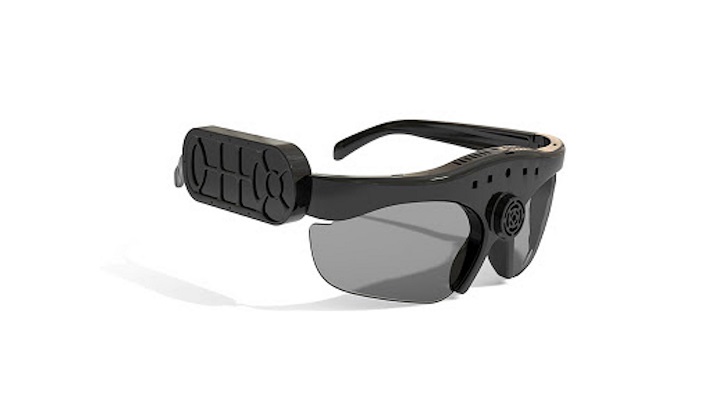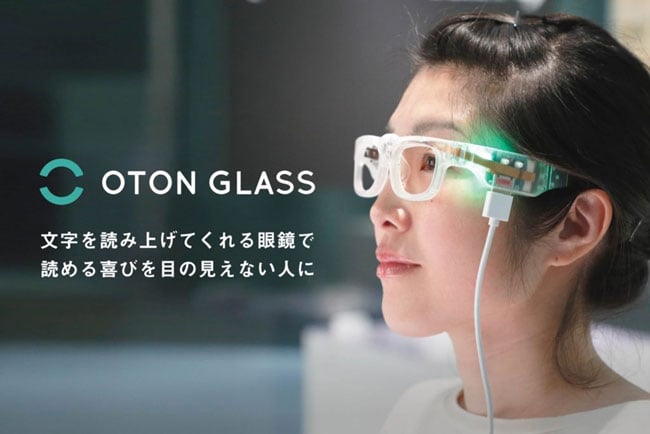Mobility Aids for Visually Impaired Users: Enhancing Independence and Navigation
Innovative Solutions in Assistive Modern Technology for Visual Problems
The landscape of assistive innovation for visual problems is progressing quickly, offering a variety of innovative options that boost access and self-reliance. From sophisticated mobile phone applications that help with navigation to wearable gadgets created for real-time advice, these tools are reshaping the experiences of those with visual problems.
Improvements in Smart Device Applications
Over the last few years, improvements in mobile phone applications have actually considerably changed the landscape of assistive technology for people with visual disabilities. These applications utilize the powerful sensors and abilities of modern smartphones to supply users with tools that improve freedom and access in their lives.
Significant amongst these advancements are applications developed for item recognition, which utilize the smartphone's camera to determine items and provide spoken summaries. Such functions empower customers to browse their settings better, whether determining products in shops or situating personal items in the house. Additionally, text-to-speech applications have improved drastically, allowing customers to record printed text with their gadget's electronic camera and receive instant sound responses, consequently assisting in analysis and understanding.
Navigation applications customized for aesthetically damaged individuals have additionally emerged, using acoustic assistance and thorough place info. These tools provide important support for wheelchair, allowing individuals to traverse strange areas with confidence. Furthermore, community-driven applications have actually promoted social communication and resource sharing among individuals with visual problems, creating a helpful network that boosts their high quality of life. Generally, smartphone applications have come to be crucial allies in promoting freedom and availability for people with aesthetic impairments.
Wearable Gadgets for Navigation
Wearable devices for navigation have actually emerged as a groundbreaking service for individuals with visual impairments, providing hands-free aid that boosts wheelchair and positioning. These devices typically make use of innovative modern technologies, including GPS, ultrasonic sensing units, and expert system, to provide real-time feedback and instructions to customers as they browse their atmosphere.
One notable instance of wearable navigating technology is smart glasses, which can detect barriers and relay auditory or haptic comments to the wearer, permitting efficient and safe activity in various setups. Various other tools, such as belts and vests equipped with sensing units, can similarly educate users of their environments by supplying signals regarding neighboring objects or adjustments in terrain.
Additionally, many wearable gadgets integrate with mobile phone applications, allowing individuals to customize their navigation preferences and receive tailored course recommendations. This customization can considerably enhance the individual experience, encouraging individuals to take a trip with better confidence and self-reliance.
As modern technology remains to develop, the possibility for wearable navigation tools to enhance the lifestyle for individuals with visual disabilities continues to be considerable, paving the method for more available and comprehensive environments.
Smart Home Modern Technology Assimilation

Moreover, smart appliances outfitted with responsive user interfaces or acoustic feedback provide intuitive communications that provide specifically to the needs of those with aesthetic disabilities. As an example, clever fridges can announce their contents and expiry dates, while smart ovens can guide customers through the food preparation process with audio instructions.
Home automation systems, such as smart buzzers and safety cams, offer comfort by permitting individuals to receive alerts and accessibility live feeds through their smart phones, improving individual safety (AI-powered visual aids). In addition, assimilation with tablets and mobile phones ensures that users can handle their home setting from anywhere within their properties
As wise home modern technology remains to evolve, it holds the prospective to change the living experiences of individuals with aesthetic impairments, promoting self-reliance and improving top quality of life in a progressively connected world.

Educational Equipment and Resources
Accessibility important link to effective instructional devices and sources is critical for people with visual impairments, as it encourages them to involve completely in their understanding experiences. Numerous assistive innovations have been developed to improve availability and foster independent knowing.
Furthermore, academic software particularly designed for aesthetically impaired individuals supplies attributes such as high-contrast modes and adjustable text sizes. These tools suit diverse discovering designs and ensure that students can customize their academic experience to their requirements.
Moreover, access to digital collections and audio publications increases the variety of available understanding materials, allowing students to discover topics extensive without the constraints imposed by traditional print sources. Joint systems that integrate availability attributes likewise facilitate team jobs, guaranteeing that aesthetically impaired pupils can contribute meaningfully together with their peers.
Community Assistance and Engagement
A robust network of community assistance and involvement is vital for individuals with visual problems, fostering a comprehensive environment where they can grow. Neighborhood organizations, local campaigning for teams, and volunteers play a critical function in giving resources, info, and friendship, which are vital for enhancing the lifestyle for those impacted by aesthetic disabilities.
Engagement activities such as workshops, gatherings, and assistance teams not just promote ability growth yet additionally advertise social interaction, lowering feelings of seclusion. These efforts motivate people to share challenges, successes, and experiences, consequently strengthening community bonds. In addition, partnerships with neighborhood companies can result in greater ease of access in public areas, even more incorporating individuals with aesthetic disabilities right into the neighborhood.
Technology likewise improves area interaction with optometrist college years on the internet systems that supply virtual support teams and sources, allowing individuals to link no matter geographical obstacles. By using both digital and in-person services, areas can create a detailed assistance network. Eventually, promoting partnership among various stakeholders-- including families, teachers, and health care specialists-- makes Discover More Here certain that individuals with visual impairments get the all natural support required to navigate everyday life successfully and with dignity.
Final Thought
Cutting-edge solutions in assistive modern technology for aesthetic problems substantially improve the lifestyle for individuals encountering these obstacles. The integration of mobile phone applications, wearable devices, smart home innovation, and academic devices cultivates better freedom and access. Moreover, community support and engagement more empower visually impaired people, promoting inclusivity and participation in numerous facets of life. Collectively, these advancements not just change daily experiences yet likewise lead the way for a much more equitable culture.
The landscape of assistive innovation for visual problems is evolving quickly, offering a variety of innovative solutions that boost access and self-reliance. Community-driven applications have actually cultivated social interaction and source sharing among people with visual problems, developing an encouraging network that boosts their top quality of life. Overall, smart device applications have actually ended up being essential allies in advertising freedom and ease of access for individuals with visual disabilities.
Lots of individuals with aesthetic disabilities are discovering better autonomy with the combination of wise home modern technology.Cutting-edge services in assistive technology for aesthetic disability significantly enhance the quality of life for people facing these difficulties.